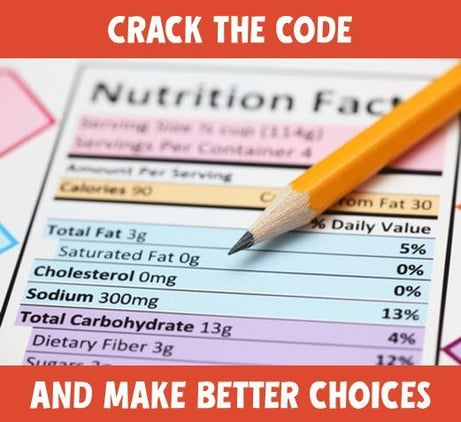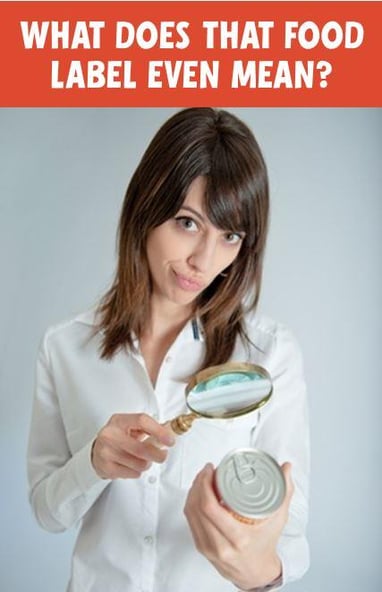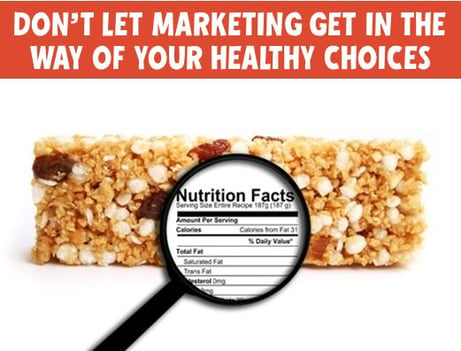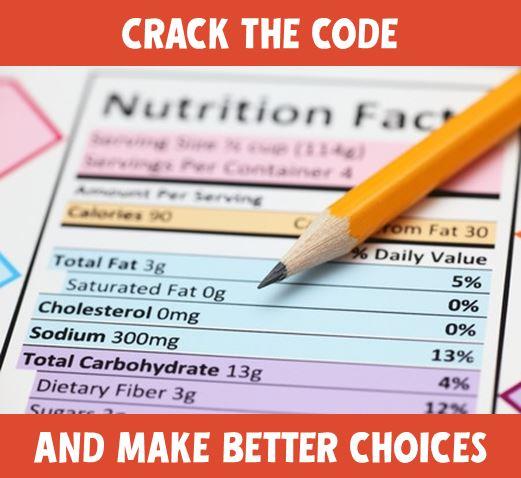 Eating healthier often starts at the grocery store, where the consumer acts as a ‘gatekeeper’ for their family, determining what food does and does not make it into their household. This can be a stressful role when you want to provide your family with a nutritionally sound menu, but are uncertain about label claims and how to decipher a nutrition facts panel. Food packaged with attractive labeling, catchy phrases, and words like ‘natural’ often drive shoppers’ decisions, but these packaging elements do not always accurately depict the nutritional value of their contents.
Eating healthier often starts at the grocery store, where the consumer acts as a ‘gatekeeper’ for their family, determining what food does and does not make it into their household. This can be a stressful role when you want to provide your family with a nutritionally sound menu, but are uncertain about label claims and how to decipher a nutrition facts panel. Food packaged with attractive labeling, catchy phrases, and words like ‘natural’ often drive shoppers’ decisions, but these packaging elements do not always accurately depict the nutritional value of their contents.
Most of us are aware of the nutrition facts panel and ingredients list posted on product labels, but these can be hard to navigate. That’s why consumer purchasing decisions are often determined by the way a product is marketed. By learning a few quick tricks, you will be able to understand the key parts of nutritional labels and be empowered to make the healthiest choices when grocery shopping.
How to Read a Food Label

- Look at the serving size and servings per container. Serving sizes are determined by something called the ‘reference amount customarily consumed’ or the amount of that food that is typically eaten in one eating occasion. Often, products vastly exceed this amount which can translate into something like a single muffin counting as multiple servings. If your product shows two servings per container, the entire container will hold double the amount of calories, fat, sugar, and so on that is listed in the nutrition facts panel.
- Be conscious of the calories in a product. If you are trying to lose weight, 300 calories coming from a quarter cup of a snack mix may not be a good decision, while a 120 calorie item that sounds filling would fit into your diet plan. But don’t let calories drive all of your decisions. For example, putting lower calories over higher calories could lead a small package of gummy bears to seem like a better option than a much more nutritious handful of nuts.
- Review the quality of the fats. Don’t just look at the ‘total fat.’ Instead, review where those fats are coming from. For example, a product may have a total fat of 10 grams, but it may have no saturated fat because it is from a healthy source such as olive oil or peanut butter. While another product may have 8 grams of fat per serving but it is mostly saturated fat and trans fat.
- Check the quality of the carbohydrates. Similar to fats, not all carbohydrates are created equal. Check to see how much of the carbohydrate is from fiber versus sugar. Also, take a look at the ingredients list to see where the sugar is coming from and try to limit added sugars. If you see words like molasses, sugar, raw sugar, honey, agave, or high fructose corn syrup, then the vast majority of the sugar will often be added sugar. If these words don’t appear or are found at the bottom of the ingredient lists, then check to see if unsweetened fruit or dairy are listed higher up in the ingredients list as these are also likely sources of sugars. If the latter is the case, don’t worry so much about the sugars.
- Learn the 5/20 Rule. This is probably one of the best and easiest tips to follow when reading a label. If you look to the right of the nutrition facts panel, you will note a % daily value. Any nutrient that is listed as 5% or lower is considered to be low in that nutrient while any nutrient with 20% or higher is considered to be high in that nutrient. Use this to gauge the quality of the nutrients in the product.

- Lastly, evaluate the ingredient lists. The ingredients are listed in descending order of predominance based upon weight. This means the first ingredient you see is what makes up the vast majority of the product while the ingredient listed last makes up the smallest amount of the product. Your healthy nutritious ingredients like whole grains, nuts, seeds, and fruit should be at the top while salt, sugars, saturated fats, and other ingredients should be at the bottom. If this is not the case, it is probably not a good item to be buying.
- As always, it comes down to balance. If you want to buy a package of cookies or a container of ice cream, that is fine. Just be sure to balance the nutritional quality of the products in your basket and try to limit the added fats/sugars/empty calories.
Other tips that can make your trip to the grocery store healthier:
- Don't shop when you are hungry
- Start around the perimeter of the store where fresh produce, dairy, and protein are located
- Shop with a plan
Shopping when you are hungry can drive unhealthy impulse decisions while shopping with a plan or grocery list can make it easier to assemble healthy snacks and meals on the fly. Shopping around the perimeter of the store encourages you to fill your cart up with fresh whole foods as opposed to packaged and processed products.
Don't miss our next post!
Read more about nutrition and food labeling:
- New Nutrition Labeling Requirements: Finalized and Proposed Changes
- What Do All Those Food Label Claims Actually Mean?
- How to Tell if a Product is Whole Grain





